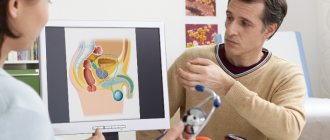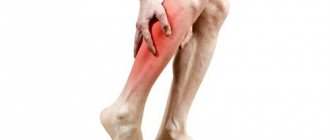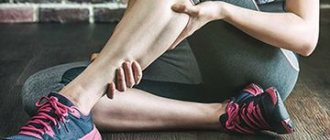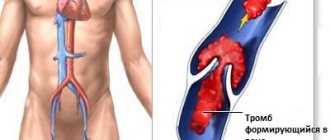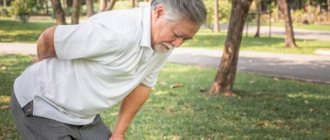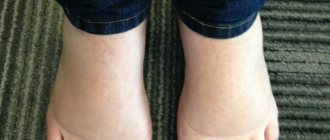Pain in the calves is a common phenomenon. It often occurs as a result of prolonged physical exertion on the lower extremities and does not signal pathologies. However, the answer to the question “Why do my calves hurt?” is not always clear, since the reasons may lie in very serious diseases. This applies to cases where sharp pain and cramps are repeated regularly or a nagging pain in the leg in the calf does not go away for a long time.
If you are faced with a similar problem, we recommend contacting the CELT Pain Clinic! This is a department that specializes in the diagnosis and treatment of pain syndromes in various locations. The high professional level of our specialists, their extensive work experience, along with modern medical equipment and treatment methods, allows them to return our patients to a full life, eliminating pain from it.
At CELT you can get advice from a specialist algologist.
Make an appointment
Pain in the calves: main causes
Minor pain may occur after a long walk, cycling or sports training due to overwork or microtrauma. In this case, the discomfort will probably go away after resting, taking a bath and light self-massage. You should consult a doctor if pain in your legs appears regularly. It can be associated both with improper load and with the development of serious diseases. Painful sensations can be caused by:
- infections;
- inflammatory processes;
- vascular pathologies;
- injuries;
- lack of microelements;
- dehydration.
If your legs “hum” and veins clearly appear on them, then the unpleasant sensations are most likely due to vascular diseases. If the leg swells and becomes hot, this may indicate an inflammatory process. If there are bruises and hematomas, you must urgently contact a traumatologist: this could be a fracture, sprain or other injury. Often, when men have pain in their calves, the cause of the discomfort lies in acute or old injuries that were not treated in time. If women's calves hurt, the reasons for this may be related to hormonal fluctuations, pregnancy or menopause, respectively, and treatment should be aimed primarily at normalizing hormonal levels and eliminating other causes of discomfort. Thus, during pregnancy, legs often swell and hurt due to deterioration of kidney function, so you should immediately inform your doctor about the presence of such a symptom. The following factors can lead to soreness in the calf muscles:
- obesity (a combination of metabolic disorders and increased load on the legs);
- hypothermia;
- wearing uncomfortable shoes;
- overwork;
- frequent consumption of salty and smoked foods;
- physical inactivity.
With a lack of physical activity in people of any age, blood circulation is impaired, tissues lack oxygen and nutrients. Deterioration of blood flow leads to the development of stagnant processes, the formation of edema, and muscle atrophy.
What diseases cause severe pain in the calves?
s legs?
- Varicose veins lead to poor circulation, the development of edema and congestion. Due to stagnation of blood, strong pressure occurs on the nerve endings, which causes increasing pain in the legs, which bothers a person both when walking and at rest.
- Another common disease that causes pain in the leg muscles is atherosclerosis. With this pathology, the walls of blood vessels become denser, which causes a narrowing of their lumen and stagnation of blood. Without treatment, the disease can even lead to blockage of veins and death. Characteristic symptoms of atherosclerosis are cold feet and aching muscle pain.
- Unpleasant sensations can also be associated with an inflammatory disease – myositis. It develops due to various infections or the presence of parasites in the body. With this pathology, cramps, intense pain and gradual muscle atrophy are observed.
- Sometimes swelling and pain in the legs are caused by heart or kidney failure. In this case, the patient may feel pain in the abdomen, heart, and lower back. Other signs are difficulty breathing, difficulty urinating, changes in heart rate, pressure surges
- If your leg in the calf area hurts during the period when you are on a diet, the cause of the discomfort may be a lack of microelements - calcium, magnesium, potassium and others. In this case, you must immediately switch to a balanced diet and do therapeutic exercises. You need to understand that a long-term lack of nutrients leads to muscle wasting, including the heart.
- Another reason why the calves hurt when walking may be diseases of the musculoskeletal system. Arthritis and arthrosis lead to the development of stagnant and inflammatory processes that affect not only cartilage, but also muscle tissue. In addition, with these diseases, the load on the lower extremities is incorrectly distributed, which causes excessive muscle tension, causing cramps and pain in the legs.
How does pain in the lower leg manifest itself in obliterating atherosclerosis of the lower extremities?
In diseases of the arteries of the legs, the delivery of blood to the muscles of the lower leg is disrupted. As a result, the muscles cannot work for a long time, as they quickly get tired from the lack of oxygen and nutrients. This is manifested by a feeling of fatigue, pain or cramps in the lower leg muscles when walking a certain distance, after which the patient is forced to stop. After a few minutes of rest, the pain goes away and the patient can resume walking again. Having walked the same distance as the first time, he is forced to stop again. Thus, the patient’s usual walking distances turn into walking with stops. With timely contact with a vascular surgeon, it is possible to reduce or completely eliminate such complaints.
Self-help for sore calf muscles
Before deciding what to do if your calves hurt, you need to understand why this happens. Try to determine the cause of the discomfort yourself - to do this, you need to remember whether you have recently had injuries, hypothermia, long walking, lack of fluid in the body, or insomnia. With dehydration, stress and fatigue, leg pain decreases after:
- light massage;
- warm foot bath with mint, chamomile or salt;
- taking enough fluids;
- recreation.
If injury, vascular pathologies or inflammatory processes are suspected, massage and foot baths are contraindicated. If the pain is very severe, you can take a pain reliever. Local agents in the form of gels and ointments help well.
If you experience frequent pain in your legs, you should consult your doctor as soon as possible. Self-medication can lead to the development of thrombosis, sepsis and other dangerous complications.
Role of the vascular system
An important factor is the slagging of the body, in particular the vascular system. Due to accumulated deposits on the walls of blood vessels, blood circulation is significantly impaired. As a result, an already serious problem is aggravated, since the removal of metabolic products slows down.
The main reasons that cause nagging pain in the legs and discomfort when moving in the calves can only be determined by a specialized specialist (vascular surgeon), who will prescribe a special set of scanning procedures and tests (blood for coagulation indicators, glucose, platelets).
Which doctor should you see if your calves hurt?
To receive medical care, you must visit a physician or orthopedist. If the pain is caused by vascular pathologies, then further treatment will be carried out by a phlebologist. In case of pain after injuries, the treatment plan is drawn up by a traumatologist. To determine the cause of pain, various diagnostic procedures are required:
- ECG;
- Vascular ultrasound;
- blood and urine tests;
- in rare cases - joint puncture;
- X-ray;
- MRI;
- CT.
What to do when your legs drag
A common reason that a person is bothered by unpleasant pain in the legs and calves, caused by muscle cramps (especially at night), may be a banal lack of essential microelements in the body for life. This can be observed in pregnant women (hips are more of a concern). As a rule, after a person begins to take a vitamin complex, problems disappear.
Let us note that modern medicine has stepped far forward, and currently there are tests that can reveal which microelement is missing in the body.
As an example, for symptoms such as painful limbs in the evening and at night, the treatment method is based on replenishing the body with the doses of magnesium it needs. That is, in order not to pull your left or right leg, you need a balanced diet.
To determine the exact cause and the correct treatment for nagging pain in the legs, you should first make an appointment with a doctor.
Features of treatment
The choice of treatment plan for pain in the calves is determined by the causes of the ailment. In most cases, surgical intervention is not required; conservative methods are sufficient: drug therapy, physiotherapy and exercise therapy. These measures help:
- improve blood circulation;
- suppress inflammatory processes;
- eliminate pain and swelling;
- remove toxins;
- strengthen the ligaments and muscles.
Selecting medications and other treatments on your own is dangerous. For example, if there is a tendency to thrombosis, heparin-based drugs are prescribed, but in case of insufficient blood clotting or weakness of the vascular walls, these drugs can cause bleeding. Excessive physical activity can lead to damage to the musculoskeletal system, and insufficient physical activity will not provide the desired therapeutic effect. Therefore, only a doctor should be involved in developing a treatment plan, including a set of exercise therapy exercises.
In the network of clinics “Hello!” Modern diagnostic equipment is used, which makes it possible to accurately diagnose even in the early stages of diseases. Experienced doctors develop individual treatment and rehabilitation regimens for patients based on classical and latest techniques, which allows them to get rid of pain quickly, without side effects or the risk of relapses.
Myalgia, muscle pain
Myalgia, or muscle pain, is a symptomatic disease that is accompanied not only by discomfort in the muscles during movement, but by swelling of the arms or legs, and the appearance of muscle inflammation. In addition, with myalgia there is a violation of the permeability of muscle cell membranes.
Symptoms of myalgia vary and depend on the type of disease. Main types of myalgia:
- Fibromyalgia – accompanied by musculoskeletal pain, which manifests itself especially strongly when palpating the muscles;
- Myositis is an inflammation of skeletal muscles, which is accompanied by pain even with the simplest movements. Treatment of this type of disease is extremely necessary, as it can lead to disability;
- Polymyositis is a disease characterized by inflammation of the striated muscles and skin. Polymyositis is often accompanied by malignant tumors.
Crick
Muscle pain can appear after fast walking, running, playing sports, or walking in poorly fitting shoes. As a rule, discomfort occurs immediately after exercise or after 12-24 hours. Most often, pain occurs in the legs, sometimes in the hips. Possible pain on palpation. Sometimes swelling of the lower leg occurs. If there is a clear connection with physical activity and the pain is bilateral, then the diagnosis is beyond doubt. In cases where the pain is one-sided, it is necessary to exclude possible venous thrombosis using objective diagnostic methods.
phlebolog.pro
Complaints of this nature are extremely common. Often people do not know which doctor to turn to and start treatment on their own, for example taking Detralex, although the cause of pain in the legs is absolutely not related to the veins.
Due to the nature of my work, I consult about 200-300 patients monthly, not only with varicose veins. Clinic doctors en masse refer patients to a phlebologist with all sorts of complaints of pain, discomfort, burning sensation, tingling and other discomfort in the lower extremities. I perform ultrasound diagnostics on almost all patients, but if I fail to find venous pathology, I have to refer such patients to other specialists, but based on the nature of the complaints, it is highly likely that I can immediately make a correct diagnosis and refer them to the right specialist.
Based on the vast experience of consulting patients with pulling, aching, twisting pain in the calves and below the knees, I will try to explain how to determine the most likely cause of their occurrence. So as not to waste time and money on visits to the clinic or commercial clinics, but immediately contact the doctor you need.
>>Thrombosis and coronavirus. How to prevent thrombosis during and after coronavirus. >>
There are several groups of diseases that manifest themselves with approximately the same symptoms, but also have their own characteristic features. The process when the doctor purposefully compiles a list of possible causes of the patient’s complaints and then consistently excludes the unlikely ones in order to get to the bottom of the true disease is called differential diagnosis.
I usually categorize complaints according to their most likely origin in order to refer the patient to the right specialist:
1. Vascular origin (diseases of the veins and arteries)
2. Musculoskeletal system (arthrosis, arthritis, inflammation of tendons, joint capsules, muscle spasms, etc.)
3. Neurological complaints (osteochondrosis, neuropathy, etc.)
So, the list for differential diagnosis in our case will be as follows:
Vascular system
Chronic venous insufficiency, more details >> pain in the calves or legs, pulling, bursting nature. It gets worse when standing or sitting. I want to lie down and raise my legs up. The pain intensifies in the afternoon, towards evening. Sometimes there are nighttime cramps in the calves (not in the feet), often in the morning. The legs are warm or hot to the touch, and there is a burning sensation in the feet. Often accompanied by swelling of the feet or legs, worsening in the evening. After a night's rest it becomes easier; in the morning, as a rule, nothing bothers me. Walking and a cool shower also bring relief. Elastic bandaging of the feet, legs, as well as any compression knitwear significantly improves the condition. Externally, there are enlarged veins and varicose nodes on the legs, but there are forms of venous insufficiency in which there is no outwardly noticeable varicose veins.
If this is your case, make an appointment with a phlebologist
, preferably one who himself performs ultrasound diagnostics at the appointment.
make an appointment: +7 495 607 0557 at our clinic. Moscow, Bolshoi Golovin Lane, 4. KST Clinic.
Your doctor is phlebologist Drobyazgo S.V.
Atherosclerosis of the arteries of the lower extremities, more>> more often occurs in men and smokers. The feet are cool to the touch and often get cold; in the warm season or indoors, patients wear warm socks. There is hair loss on the legs, the skin becomes thin and dry. Pain in the feet or calves appears when walking a certain distance, and immediately goes away after stopping (intermittent claudication). Lying with your legs raised up is not comfortable; in advanced cases, patients wake up at night and lower their legs down, rubbing their legs. In this case, make an appointment with a vascular (or x-ray endovascular) surgeon
.
Musculoskeletal system
Flat feet and other types of foot deformities, more >> pain, discomfort occur in the area of the feet, usually after a long walk, there are night cramps in the feet. The calves or muscles along the front of the lower leg may also hurt. The condition worsens if a girl who is accustomed to wearing high-heeled shoes puts on slippers, ballet flats or other flat-soled shoes.
The pain caused by inflammation of the tendon is localized, that is, it hurts in a specific place; you can point with your finger where exactly it hurts. An orthopedic traumatologist deals with foot problems
, there is also a specialist with a narrow profile who works exclusively with the foot -
a podiatrist.
Inflammation of the joints - arthrosis, arthritis>>
pain occurs when walking, climbing stairs, or during certain movements. Clearly in the knee area or in the popliteal fossa (very characteristic). The knee area may be swollen and hot to the touch. The same
refers to the ankle joint, where it hurts to step on the foot. Osteoarthritis of the hip joint can manifest itself as pain in a certain position, in particular when the hip is abducted to the side in a lying position.
Problems with the musculoskeletal system are characterized by the following: pain is maximum at the beginning of movement, it is difficult to get up from a chair if you have been sitting motionless for a long time, or to start walking. In the process of walking or moving, it becomes easier, as they say, “you need to disperse.” You need to contact a traumatologist-orthopedist.
Neurology
Diseases of the nervous system, more >> the most common cause of nagging pain in the hip and lower leg. When the sciatic nerve is pinched (ischalgia), radicular syndrome, pain occurs along the back, outer surface of the thigh and lower leg. There is often a painful point in the buttock area, from where the pain seems to spread (radiate) down the leg. The pain is not associated with walking or exertion, and may be worse at night, but not necessarily.
Characterized by paresthesia - sensory disturbances. These include:
- crawling
- tingling
- increased skin sensitivity (it hurts to touch the skin of the feet)
- feeling of numbness (as if the leg had been put to death)
- burning sensation (while the skin temperature is normal to the touch)
In these cases, the pain is most often neurological in nature. It can be caused by osteochondrosis of the spine, radicular syndrome, but there are neuropathies with diabetes mellitus, age-related diseases of the nervous system (multiple sclerosis), etc. Contact a neurologist
If you suspect diabetes mellitus, follow-up
with an endocrinologist is mandatory.
Separately, I will say about restless legs syndrome (RLS)>>, which is very often diagnosed completely unreasonably. This disease has absolutely clear criteria, and if your complaints do not meet them, then you do not have restless legs syndrome. We need to look for another reason. The RLS criteria are as follows:
1. an irresistible urge to move your legs
2. arise at rest
3. disappear when walking or other activity
4. worsen in the evening or at night
5. It’s not a cramp or a habit of swinging your leg.
If this is your case, read my detailed article about restless legs syndrome, its diagnosis and treatment here>>
Thus, without claiming to have an absolutely accurate diagnosis, I can say with confidence that if your complaints as described fit one of the groups I described, you can immediately make an appointment with a specialized specialist.
Muscle cramps
Muscle cramps (cramps) are strong, painful contractions and tightening of muscles that occur suddenly, lasting from a few seconds to several minutes. Muscle soreness may persist for several hours after the clenching (cramp) episode ends. They usually go away on their own and do not require special treatment.
The cause of seizures cannot always be determined. Muscle cramps can occur under various conditions or types of physical activity such as:
- Exercise, injury or overuse of muscles. When a muscle is overfatigued, has poor elasticity or an incorrect load vector, it can cramp.
- Dehydration associated with exercise during hot weather can cause heat cramps. In addition, various conditions (vomiting, diarrhea or lack of water) can also cause cramps.
- Pregnancy. Cramps during pregnancy can occur due to a decrease in the amount of minerals in the body, such as calcium and magnesium, especially in the last months of pregnancy (when the formation of the fetal musculoskeletal system is completed).
- Exposure to low temperatures, especially when immersed in cold water.
- Some diseases (peripheral artery occlusive disease, kidney disease, thyroid disease), multiple sclerosis, etc.
- Medicines - some drugs can cause seizures (neuroleptics, diuretics). In any case, if there are recurring episodes of seizures, you should consult a doctor.
Restless legs syndrome
Restless legs syndrome is a condition in which the patient experiences discomfort from the position of the legs and, sometimes, an irresistible urge to move the legs. This syndrome can lead to sleep disturbances and interfere with daily life.
Patients describe their sensations as the touch of needles in their legs, and sometimes as nagging pain. Changing the position of the legs brings temporary relief. Most often, these sensations occur in the evening, when a person is trying to relax or go to bed. The cause of this syndrome is not known. Certain medications (such as antidepressants), pregnancy, or iron deficiency (anemia) may cause this syndrome. Restless legs syndrome is treated with drugs that increase dopamine levels in the brain (levodopa) or anticonvulsants (gabapentin) to control leg movements and improve sleep. Opiates are extremely rarely used.
Juvenile idiopathic arthritis
Juvenile idiopathic arthritis, often called juvenile rheumatoid arthritis or juvenile chronic arthritis, is a childhood disease characterized by inflammation of the joints, which become swollen and painful (and therefore impair joint mobility). It manifests itself in children as pain in the joints, impaired gait, due to decreased mobility in the joints and stiffness in the joints, usually in the first half of the day, with regression within 1-1.5 hours and after normal physical activity. The causes of this disease are not entirely clear. Most researchers believe that the disease is caused by a combination of factors that cause excessive activation of the immune system. There are several types of juvenile arthritis. The division into types is based on the number of joints involved in the process during the first 6 months from the onset of the disease, the area of the body where the disease manifested itself, and the presence of other symptoms. Types of juvenile arthritis: oligoarthritis (affects no more than 4 joints), polyarthritis (affects 5 or more joints), rheumatic-positive and rheumatic-negative (depending on the presence of rheumatic factor in the blood), systemic (accompanied by rashes on the body, fever and lesions). eye).
Transient ischemic attacks
Transient ischemic attacks are a temporary disruption of the blood supply to the brain. They are harbingers of a stroke. The only difference from a stroke is that the symptoms gradually disappear. The following symptoms should alert you:
- Sudden numbness, tingling and weakness in half the body or limb
- Gait disturbance
- Impaired perception of reality
- Speech Impairment
- Strong headache.
If these symptoms occur, seek emergency medical attention
